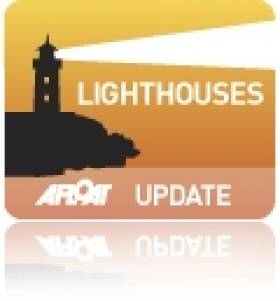Displaying items by tag: New Irish Lighthouse
#NEW IRISH LIGHTHOUSE – The first lighthouse of a new generation to dot the Irish coastline was officially 'switched-on' at Roancarrigmore, a small island marking the eastern entrance to Castletownbere Co. Cork, writes Jehan Ashmore.
The ceremony was performed by Minister for Agriculture, Food and Marine, Simon Coveney, T.D. Constructed of stainless steel the new structure stands only 8.5m high and is sited at the foot of the original lighthouse that towers above, where there has a light since 1847 to warn shipping to the dangers of the rocky island.
The Commissioners of Irish Lights have taken an international lead in developing this new state of the art lighthouse, which beyond technical advances is also geared to make significant cost savings due to very low maintenance requirements.
In addition there will be environment benefits from the replacement of diesel generation by renewable energy and the ending of waste-water and refuse disposal.
The lighthouse has a low-voltage LED Light and provides a clearer quality of light and is far more reliable than traditional filament lamps. The new lighting system is powered using 12 x 50W solar panels to replace the masonry tower which had a 100 Volt, 1,500 Watt filament lamp and diesel generators.
The sectored light will be supplemented and monitored by Automatic Identification System (AIS) functionality which advises the mariner directly on their bridge of the status and position of the light.
AIS is a key component of the International Maritime Organisation e-Navigation project and will ensure Roancarrig is equipped to take advantage of this initiative.
In addition there are proposals to examine possible new uses for the older lighthouse which is adjoined by a former lighthouse-house keeper dwelling used by previous generations before automation took over.





























































